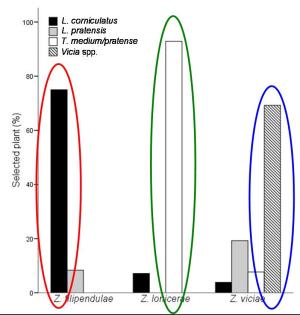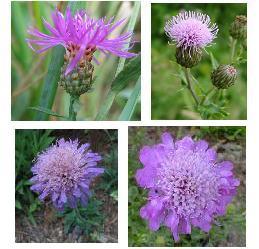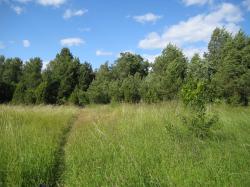SMALL SCALE

Larval host plants
The larvae of the three burnet moth species had different host plant preferences. Zygaena filipendulae preferred Lotus corniculatus, whereas Zygaena lonicerae chose Trifolium medium/pratense and Zygaena viciae favoured Vicia spp.
For all three burnet species, the cover of their individual most important larval host plant was greater around larvae than at control spots, and greater around larvae than around pupae and adults. The plants chosen by larvae were also larger than randomly measured plants of the same species

Nectar sources
Centaurea jacea was the nectar plant most frequently visited by both Zygaena filipendulae (48 %) and Zygaena lonicerae (43 %), whereas Zygaena viciae used Cirsium arvense as main nectar source (32 %).
The three burnet species also foraged on e.g. Knautia arvensis and Scabiosa columbaria.

Vegetation height and sun exposure
Pupae of Zygaena filipendulae (the only species whose pupae were studied) were surrounded by higher vegetation than larvae and adults.
The larvae of Zygaena lonicerae were encountered in significantly shadier conditions than adults, whereas no difference was found between larvae and adults (or pupae) of Zygaena filipendulae or Zygaena viciae.
Responsible for this page:
Director of undergraduate studies Biology
Last updated:
05/15/09
